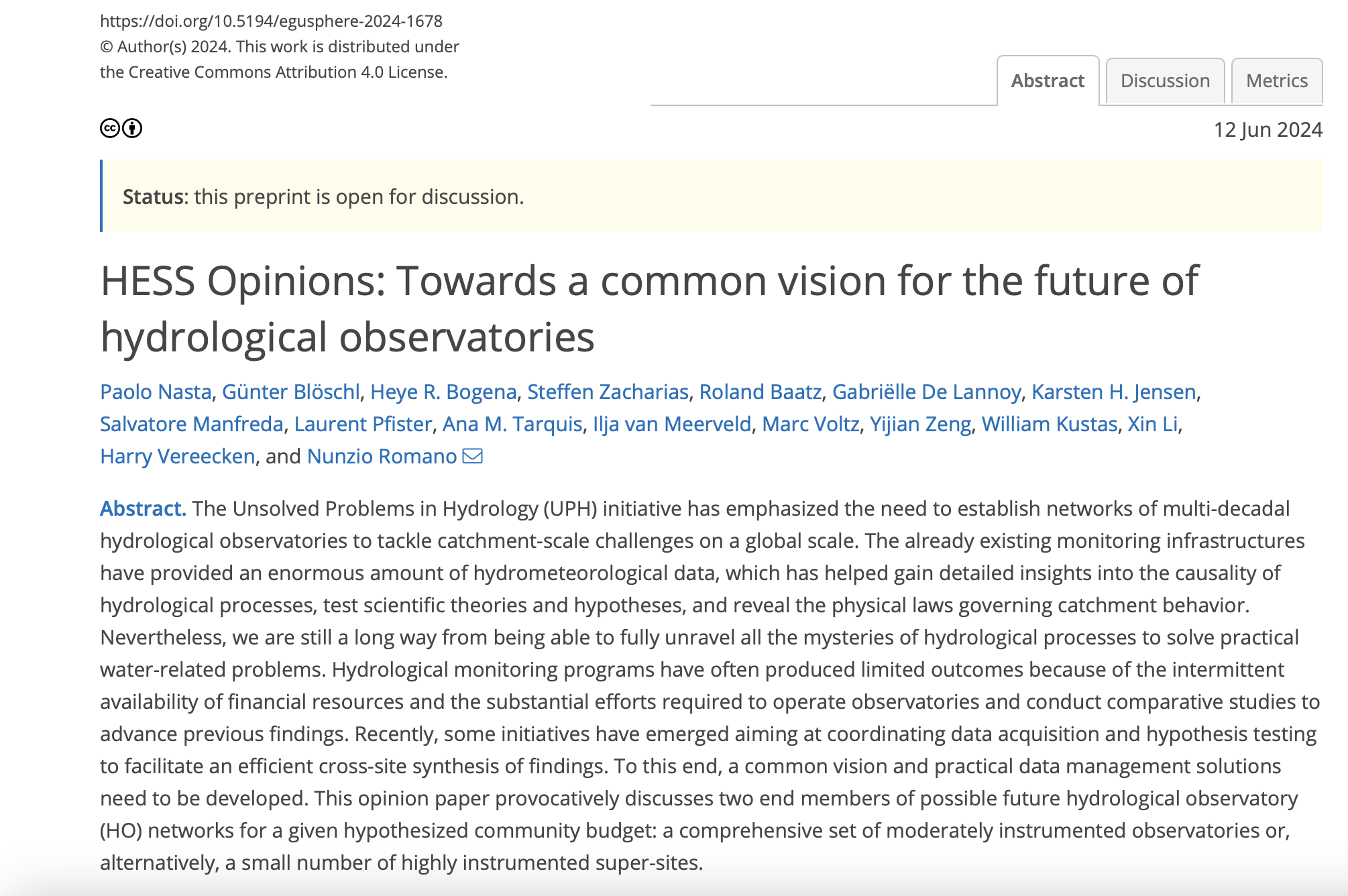Abstract. The Unsolved Problems in Hydrology (UPH) initiative has emphasized the need to establish networks of multi-decadal hydrological observatories to tackle catchment-scale challenges on a global scale. The already existing monitoring infrastructures have provided an enormous amount of hydrometeorological data, which has helped gain detailed insights into the causality of hydrological processes, test scientific theories and hypotheses, and reveal the physical laws governing catchment behavior. Nevertheless, we are still a long way from being able to fully unravel all the mysteries of hydrological processes to solve practical water-related problems. Hydrological monitoring programs have often produced limited outcomes because of the intermittent availability of financial resources and the substantial efforts required to operate observatories and conduct comparative studies to advance previous findings. Recently, some initiatives have emerged aiming at coordinating data acquisition and hypothesis testing to facilitate an efficient cross-site synthesis of findings. To this end, a common vision and practical data management solutions need to be developed. This opinion paper provocatively discusses two end members of possible future hydrological observatory (HO) networks for a given hypothesized community budget: a comprehensive set of moderately instrumented observatories or, alternatively, a small number of highly instrumented super-sites.
A network of moderately instrumented, hydrological monitoring sites distributed across the globe would provide broad spatial coverage across the major pedoclimatic regions, help address UPH about the impact of climate and social systems (e.g., land use change and global warming) on water resources, and enhance the potential for knowledge transfer. However, the moderate instrumentation at each site may hamper an in-depth understanding of complex hydrological processes. In contrast, a few extensively instrumented research sites would allow for community-based experiments in an unprecedented manner, thereby providing more fundamental insights into complex, non-linear processes modulated by scale-dependent feedback and multiscale spatio-temporal heterogeneity. Lumping resources has proven to be an effective strategy in other geosciences, e.g. for research vessels in oceanography and drilling programs in geology. On the downside, a few catchments will not be representative of all pedoclimatic regions, necessitating the consideration of generalization issues.
A discussion on the relative merits and limitations of these two visions on HOs is presented with the objective of building consensus on the optimal path for the hydrological community to address the UPH in the coming decades. A final synthesis proposes the potential for combining the two end members into a flexible management strategy.
How to cite. Nasta, P., Blöschl, G., Bogena, H. R., Zacharias, S., Baatz, R., De Lannoy, G., Jensen, K. H., Manfreda, S., Pfister, L., Tarquis, A. M., van Meerveld, I., Voltz, M., Zeng, Y., Kustas, W., Li, X., Vereecken, H., and Romano, N.: HESS Opinions: Towards a common vision for the future of hydrological observatories , EGUsphere [preprint], https://doi.org/10.5194/egusphere-2024-1678, 2024.
